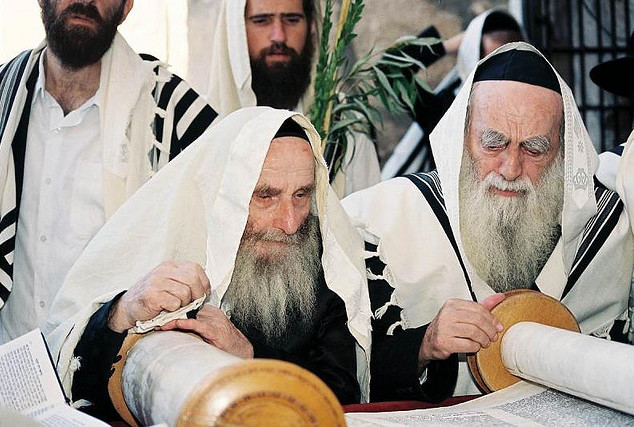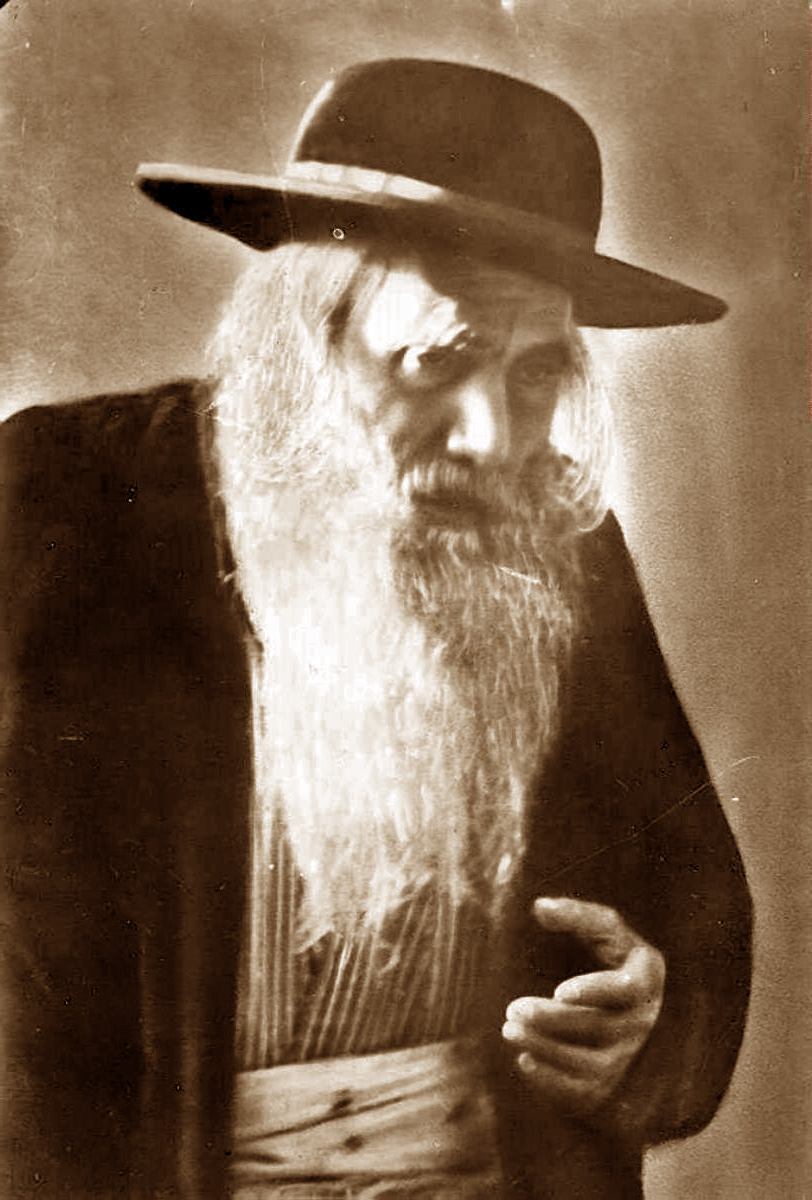|
Avraham Chaim Naeh
Avraham Chaim Naeh (3 May 1890 – 21 July 1954) was a Lubavitcher chassidApprobations to ''Ketzos ha-Shulchan''. and major '' posek'' ( halachic authority) active during the first half of twentieth century. He is most famous for his works ''Ketzos ha-Shulchan'', ''Piskei HaSiddur'', ''Shi'urei Mikveh'', and ''Shi'urei Torah'' (Measurements of the Torah), in which he converted biblical measurements into contemporary measurements. The work is of great practical significance, since much of Jewish law involves specific requirements of precise sizes and quantities. Naeh was born in Hebron. His father, Rabbi Menachem Mendel Naeh, was the dean of the Magen Avos Yeshiva, founded by the Sdei Chemed.Saltiel, MannyGedolim Yahrtzeits: 20 Tammuz ''Chinuch.org'' He studied in his youth at the Ohel Moshe Yeshiva, under Rabbi Yitzchak Yerucham Diskin. In 1912, Naeh published ''Chanoch LaNa'ar'', a book containing laws for bar mitzvah boys. When World War I broke out, the Ottoman authorities e ... [...More Info...] [...Related Items...] OR: [Wikipedia] [Google] [Baidu] |
Hebron
Hebron ( ar, الخليل or ; he, חֶבְרוֹן ) is a State of Palestine, Palestinian. city in the southern West Bank, south of Jerusalem. Nestled in the Judaean Mountains, it lies Above mean sea level, above sea level. The second-largest city in the West Bank (after East Jerusalem), and the third-largest in the Palestinian territories (after East Jerusalem and Gaza City, Gaza), it has a population of over 215,000 Palestinians (2016), and seven hundred Israeli settlement, Jewish settlers concentrated on the outskirts of its Old City of Hebron, Old City. It includes the Cave of the Patriarchs, which Jewish, Christian, and Islamic traditions all designate as the burial site of three key Patriarchs (Bible), patriarchal/Patriarchs (Bible), matriarchal couples. The city is often considered one of the Four Holy Cities, four holy cities in Judaism. as well as in Islam. Hebron is considered one of the oldest cities in the Levant. According to the Bible, Abraham settled in Hebr ... [...More Info...] [...Related Items...] OR: [Wikipedia] [Google] [Baidu] |
Yeshiva
A yeshiva (; he, ישיבה, , sitting; pl. , or ) is a traditional Jewish educational institution focused on the study of Rabbinic literature, primarily the Talmud and halacha (Jewish law), while Torah and Jewish philosophy are studied in parallel. The studying is usually done through daily ''shiurim'' (lectures or classes) as well as in study pairs called ''chavrusas'' (Aramaic for 'friendship' or 'companionship'). ''Chavrusa''-style learning is one of the unique features of the yeshiva. In the United States and Israel, different levels of yeshiva education have different names. In the United States, elementary-school students enroll in a ''cheder'', post- bar mitzvah-age students learn in a '' metivta'', and undergraduate-level students learn in a '' beit midrash'' or ''yeshiva gedola'' ( he, ישיבה גדולה, , large yeshiva' or 'great yeshiva). In Israel, elementary-school students enroll in a '' Talmud Torah'' or '' cheder'', post-bar mitzvah-age students ... [...More Info...] [...Related Items...] OR: [Wikipedia] [Google] [Baidu] |
Hasidic Rabbis In Mandatory Palestine
Hasidism, sometimes spelled Chassidism, and also known as Hasidic Judaism (Ashkenazi Hebrew: חסידות ''Ḥăsīdus'', ; originally, "piety"), is a Jewish religious group that arose as a spiritual revival movement in the territory of contemporary Western Ukraine during the 18th century, and spread rapidly throughout Eastern Europe. Today, most affiliates reside in Israel and the United States. Israel Ben Eliezer, the "Baal Shem Tov", is regarded as its founding father, and his disciples developed and disseminated it. Present-day Hasidism is a sub-group within Haredi Judaism and is noted for its religious conservatism and social seclusion. Its members adhere closely both to Orthodox Jewish practice – with the movement's own unique emphases – and the traditions of Eastern European Jews. Many of the latter, including various special styles of dress and the use of the Yiddish language, are nowadays associated almost exclusively with Hasidism. Hasidic thought draws heavily ... [...More Info...] [...Related Items...] OR: [Wikipedia] [Google] [Baidu] |
Rabbis In Jerusalem
A rabbi () is a spiritual leader or religious teacher in Judaism. One becomes a rabbi by being ordained by another rabbi – known as ''semikha'' – following a course of study of Jewish history and texts such as the Talmud. The basic form of the rabbi developed in the Pharisaic (167 BCE–73 CE) and Talmudic (70–640 CE) eras, when learned teachers assembled to codify Judaism's written and oral laws. The title "rabbi" was first used in the first century CE. In more recent centuries, the duties of a rabbi became increasingly influenced by the duties of the Protestant Christian minister, hence the title "pulpit rabbis", and in 19th-century Germany and the United States rabbinic activities including sermons, pastoral counseling, and representing the community to the outside, all increased in importance. Within the various Jewish denominations, there are different requirements for rabbinic ordination, and differences in opinion regarding who is recognized as a rabbi. For exam ... [...More Info...] [...Related Items...] OR: [Wikipedia] [Google] [Baidu] |
Hasidic Rabbis In Israel
Hasidism, sometimes spelled Chassidism, and also known as Hasidic Judaism ( Ashkenazi Hebrew: חסידות ''Ḥăsīdus'', ; originally, "piety"), is a Jewish religious group that arose as a spiritual revival movement in the territory of contemporary Western Ukraine during the 18th century, and spread rapidly throughout Eastern Europe. Today, most affiliates reside in Israel and the United States. Israel Ben Eliezer, the "Baal Shem Tov", is regarded as its founding father, and his disciples developed and disseminated it. Present-day Hasidism is a sub-group within Haredi Judaism and is noted for its religious conservatism and social seclusion. Its members adhere closely both to Orthodox Jewish practice – with the movement's own unique emphases – and the traditions of Eastern European Jews. Many of the latter, including various special styles of dress and the use of the Yiddish language, are nowadays associated almost exclusively with Hasidism. Hasidic thought draws heavily ... [...More Info...] [...Related Items...] OR: [Wikipedia] [Google] [Baidu] |
Chabad-Lubavitch Rabbis
Chabad, also known as Lubavitch, Habad and Chabad-Lubavitch (), is an Orthodox Jewish Hasidic dynasty. Chabad is one of the world's best-known Hasidic movements, particularly for its outreach activities. It is one of the largest Hasidic groups and Jewish religious organizations in the world. Unlike most Haredi groups, which are self-segregating, Chabad operates mainly in the wider world and caters to secularized Jews. Founded in 1775 by Rabbi Schneur Zalman of Liadi, the name "Chabad" () is an acronym formed from three Hebrew words— (the first three sephirot of the kabbalistic Tree of Life) (): "Wisdom, Understanding, and Knowledge"—which represent the intellectual and kabbalistic underpinnings of the movement. The name Lubavitch derives from the town in which the now-dominant line of leaders resided from 1813 to 1915. Other, non-Lubavitch scions of Chabad either disappeared or merged into the Lubavitch line. In the 1930s, the sixth Rebbe of Chabad, Rabbi Yosef Yitzchak Sc ... [...More Info...] [...Related Items...] OR: [Wikipedia] [Google] [Baidu] |
1954 Deaths
Events January * January 1 – The Soviet Union ceases to demand war reparations from West Germany. * January 3 – The Italian broadcaster RAI officially begins transmitting. * January 7 – Georgetown-IBM experiment: The first public demonstration of a machine translation system is held in New York, at the head office of IBM. * January 10 – BOAC Flight 781, a de Havilland Comet jet plane, disintegrates in mid-air due to metal fatigue, and crashes in the Mediterranean near Elba; all 35 people on board are killed. * January 12 – Avalanches in Austria kill more than 200. * January 15 – Mau Mau leader Waruhiu Itote is captured in Kenya. * January 17 – In Yugoslavia, Milovan Đilas, one of the leading members of the League of Communists of Yugoslavia, is relieved of his duties. * January 20 – The US-based National Negro Network is established, with 46 member radio stations. * January 21 – The first nuclear-pow ... [...More Info...] [...Related Items...] OR: [Wikipedia] [Google] [Baidu] |
1890 Births
Year 189 ( CLXXXIX) was a common year starting on Wednesday (link will display the full calendar) of the Julian calendar. At the time, it was known as the Year of the Consulship of Silanus and Silanus (or, less frequently, year 942 '' Ab urbe condita''). The denomination 189 for this year has been used since the early medieval period, when the Anno Domini calendar era became the prevalent method in Europe for naming years. Events By place Roman Empire * Plague (possibly smallpox) kills as many as 2,000 people per day in Rome. Farmers are unable to harvest their crops, and food shortages bring riots in the city. China * Liu Bian succeeds Emperor Ling, as Chinese emperor of the Han Dynasty. * Dong Zhuo has Liu Bian deposed, and installs Emperor Xian as emperor. * Two thousand eunuchs in the palace are slaughtered in a violent purge in Luoyang, the capital of Han. By topic Arts and sciences * Galen publishes his ''"Treatise on the various temperaments"'' ... [...More Info...] [...Related Items...] OR: [Wikipedia] [Google] [Baidu] |
HaModia
''Hamodia'' ( he, המודיע – "''the Informer''") is a Hebrew-language daily newspaper published in Jerusalem. A daily English-language edition is also published in the United States, and weekly English-language editions in England and Israel. A weekly edition for French-speaking readers debuted in 2008. The newspaper's slogan is "The Newspaper of Torah Jewry". It comes with two magazines, ''Inyan'' and ''Prime''. ''Haaretz'', the newspaper of Israel's secular left, describes ''Hamodia'' as one of the "most powerful" newspapers in the Haredi community. History ''Hamodia'' was founded in 1950 by Rabbi Yehuda Leib Levin, son of the Agudat Israel leader Rabbi Yitzhak-Meir Levin of Warsaw and Jerusalem. Its current director general is Rabbi Chaim Moshe Knopf, and its deputy director general is Knopf's son, Rabbi Elazar Knopf. English-language edition The English-language edition of ''Hamodia'' is published by Levin's daughter, Ruth Lichtenstein. It was first printed on Febru ... [...More Info...] [...Related Items...] OR: [Wikipedia] [Google] [Baidu] |
Haredi
Haredi Judaism ( he, ', ; also spelled ''Charedi'' in English; plural ''Haredim'' or ''Charedim'') consists of groups within Orthodox Judaism that are characterized by their strict adherence to '' halakha'' (Jewish law) and traditions, in opposition to modern values and practices. Its members are usually referred to as ultra-Orthodox in English; however, the term "ultra-Orthodox" is considered pejorative by many of its adherents, who prefer terms like strictly Orthodox or Haredi. Haredi Jews regard themselves as the most religiously authentic group of Jews, although other movements of Judaism disagree. Some scholars have suggested that Haredi Judaism is a reaction to societal changes, including political emancipation, the '' Haskalah'' movement derived from the Enlightenment, acculturation, secularization, religious reform in all its forms from mild to extreme, the rise of the Jewish national movements, etc. In contrast to Modern Orthodox Judaism, followers of Haredi Judai ... [...More Info...] [...Related Items...] OR: [Wikipedia] [Google] [Baidu] |
Yosef Chaim Sonnenfeld
Yosef Chaim Sonnenfeld, also spelled Zonnenfeld (1 December 1848 – 26 February 1932), was the rabbi and co-founder of the Edah HaChareidis, a Haredi Jewish community in Jerusalem, during the years of the British Mandate of Palestine. He was originally given the name "Chaim"; however, the name "Yosef" was added to him while he experienced an illness. Sonnenfeld was born in Verbó in the Austrian Empire. His father, Rabbi Avraham Shlomo Zonnenfeld, died when Chaim was five years old. Sonnenfeld was a student of Rabbi Samuel Benjamin Sofer (the ''Ksav Sofer''), the son of Rabbi Moses Sofer (the ''Chasam Sofer''). He was also a student of Rabbi Avraham Schag in Kobersdorf (who was himself a disciple of the Chasam Sofer); Sonnenfeld moved from the latter city to Jerusalem in 1873. Sonnenfeld became an important figure in Jerusalem's Old City, serving as the right-hand man of Rabbi Yehoshua Leib Diskin and assisting the latter in communal activities, such as the founding of sch ... [...More Info...] [...Related Items...] OR: [Wikipedia] [Google] [Baidu] |






